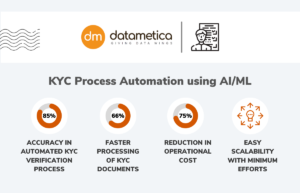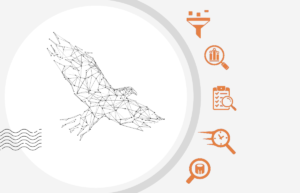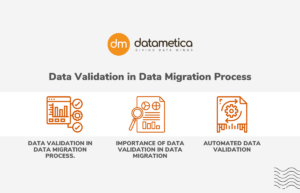In the age of self-service business intelligence, nearly every company considers itself a data-first company, yet not every company provides its data architecture with the openness and scalability it deserves. The awareness that the current data architecture (which might be a siloed data warehouse or a data lake with restricted real-time streaming capabilities) may not be serving the organization’s objectives is at the root of this need for democratization and scalability. The data team wishes there was a simpler approach to address your organization’s rising needs, such as dealing with an endless stream of ad hoc queries and passing many data sources through a single ETL pipeline.
Data Mesh is the newest solution in the data industry. It provides data owners with additional autonomy and flexibility. This enables data teams to meet all data consumers’ expectations through a single pipeline, allowing data owners to experiment with new ideas.

How does Data Mesh help enterprises?
Enterprises dealing with a multi-domain architecture must deal with issues such as operation order, domain communication, and shared services such as environment generation and meta-orchestration. Monolithic enterprise data architectures are divided into subsystems or domains by Data Mesh. Each subsystem or domain is managed by a team. A data mesh handles the large volume of data by creating an efficient schema as a way to manage different data sources across an enterprise’s ecosystem that can be used again and again. This makes the data easier to find and gives data consumers faster, more efficient, and secure access to the data they need in a certain category. Data mesh makes it easy for business users and data scientists to access, analyze, and use business insights from almost any data source. Let’s take a look at some of the key characteristics that businesses notice with Data mesh architecture.
Domain-oriented data owners and pipelines:
Data meshes are a type of data grid that divides data ownership among domain data owners. They also make it simpler for scattered data in various locations to communicate with one another.
The data infrastructure provides the tools for each domain to process data, but each domain is responsible for ingesting, cleaning, and aggregating the data in order to build business intelligence assets. Although each domain has its own ETL pipelines, they all have the same capabilities for storing, cataloging and managing raw data access limitations. The owners of a domain may use it for advanced analytics or operations after it has changed data.
Standardization & interoperability:
Each domain has a universal set of data standards that make it easy, when necessary, to collaborate with other domains. Some data (raw sources as well as cleansed, converted, and served data sets) will always be useful across multiple domains.
The data mesh must define formatting, governance, discoverability, and metadata fields, among other things, in order for cross-domain collaboration to be possible. In the same way that a microservice defines and agrees on SLAs and quality measures, each data domain must establish and agree on SLAs and quality measures that will “guarantee” their clients.
Self-service:
Data meshes use domain-oriented design concepts to provide customers with a self-service data platform that hides technical complexity, allowing them to concentrate on the data use case.
Domain-oriented design is concerned with duplicating efforts and skills in each domain’s data pipelines and infrastructure. The data mesh combines domain-agnostic data infrastructure capabilities into a single platform that controls pipeline engines, storage, and streaming. These components are used by each domain to execute their own ETL pipelines, providing them with the support and autonomy they need to serve their data effectively.
Conclusion
Data mesh opens up a world of possibilities for businesses in many ways, such as behavior modeling, analytics, and applications that use a lot of data. Even though it is not a silver bullet for centralized, monolithic data architectures, the data mesh strategy’s principles, practices, and technologies are meant to solve some of the most critical and unaddressed modernization goals for data-driven business initiatives.
Datametica is a global leader in data warehousing modernization and migration that has helped multiple organizations migrate to the cloud using our automated migration product suite. Initiate a conversation with us today to explore more on enterprise data storage options.
.
.
.
About Datametica
A Global Leader in Data Warehouse Modernization & Migration. We empower businesses by migrating their Data/Workload/ETL/Analytics to the Cloud by leveraging Automation.



